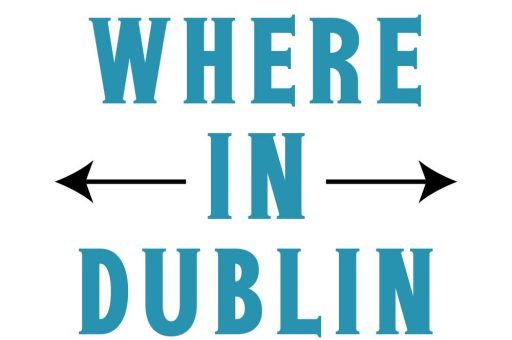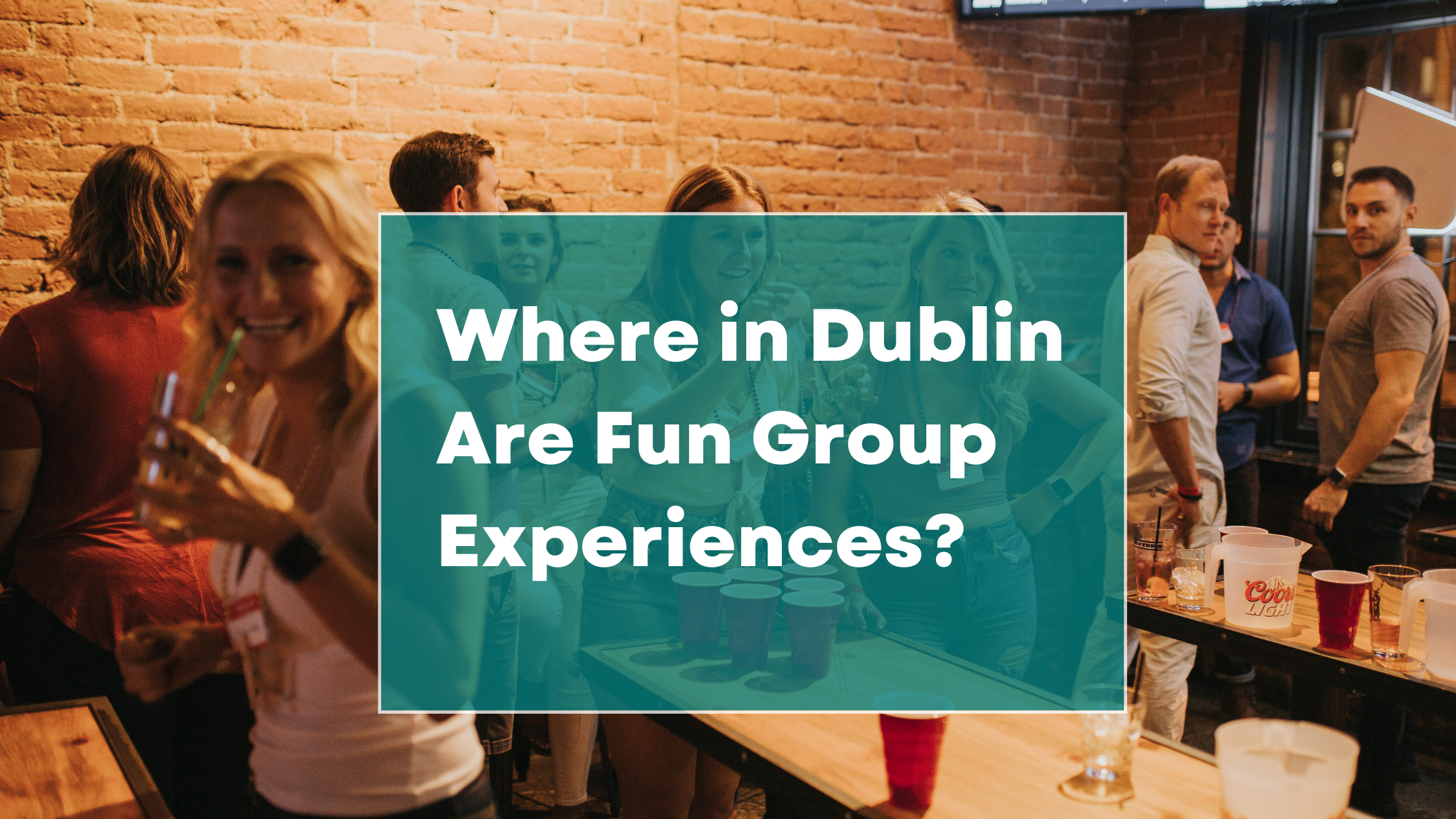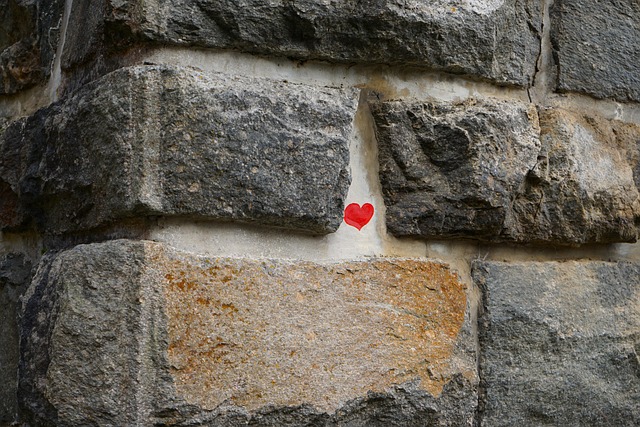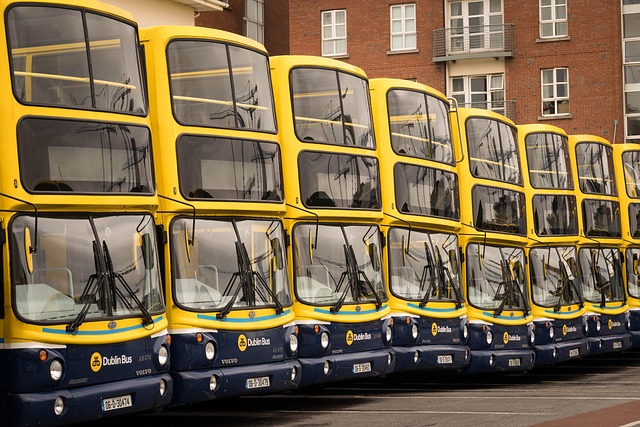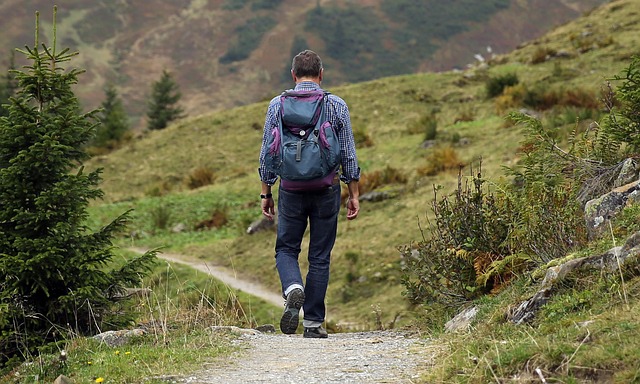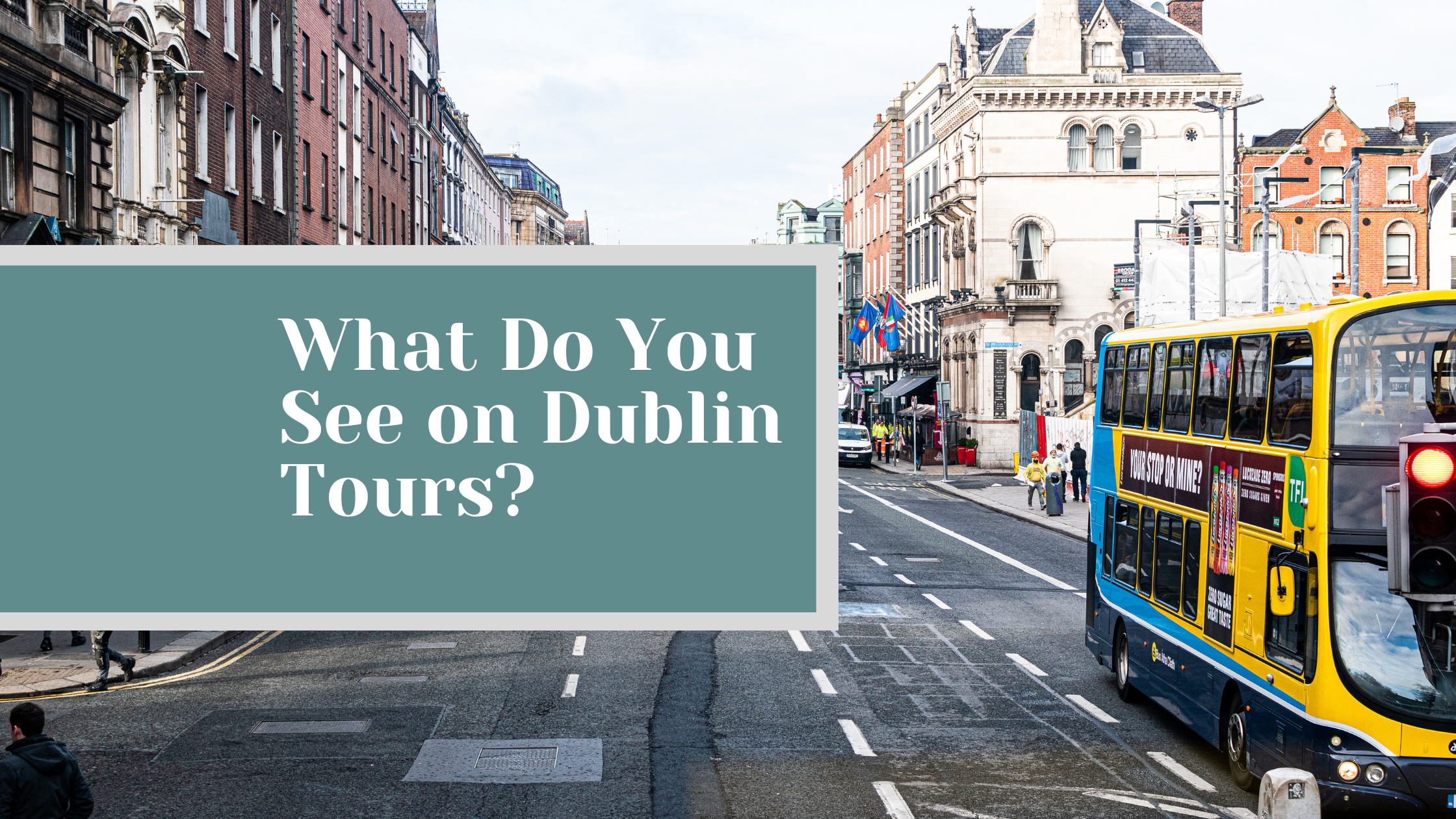
If you’re thinking about visiting Dublin or planning to explore it on a guided tour, you’re in for a treat. Dublin has this charming mix of history, humor, music, and pure Irish warmth that makes every corner of the city worth discovering. From my own personal experience, Dublin isn’t a place you just visit, it’s a city you feel. It’s in the sound of the street performers, the laughter from cozy pubs, and the stories layered into every old stone wall.
In this post, I’ll walk you through what you actually see, experience, and enjoy on Dublin tours, from the city center highlights to the quieter, hidden corners that most people miss. Whatever you want, even if you’re into history, food, nature, or just a good pint with great company, Dublin offers something memorable for everyone.
The Heart of Dublin: City Center Highlights
Trinity College and the Book of Kells
One of the first stops on any Dublin tour is usually Trinity College, Ireland’s oldest university, founded in 1592. The highlight here is the Book of Kells, a 9th-century manuscript created by Celtic monks. It’s one of the most beautifully illustrated religious texts in existence.
When you walk into the Long Room Library, it feels like stepping into another century. The scent of old books fills the air, and the towering shelves stretch endlessly upward. You’ll also see ancient harps, historic maps, and letters from Irish literary figures.
Guided tours often include details about the students who studied there, including famous alumni like Oscar Wilde, Jonathan Swift, and Samuel Beckett.
Dublin Castle and Chester Beatty Library
Next, you’ll often visit Dublin Castle, which has been a major site of political power since the 13th century. It’s not just a castle in the fairytale sense, it’s a mix of medieval towers, Georgian halls, and government offices.
Inside, the State Apartments are stunning, filled with chandeliers, royal portraits, and richly decorated rooms once used by British rulers. Nearby, the Chester Beatty Library is a hidden treasure. It holds one of the world’s best collections of manuscripts, artworks, and religious texts from Asia, the Middle East, and Europe.
Temple Bar: Where Dublin Comes Alive
Even if you’ve never been to Dublin, you’ve probably heard of Temple Bar. It’s the city’s nightlife hub, narrow cobbled streets lined with pubs, live music, and a lively crowd.
During the day, it’s full of art galleries, vintage shops, and street performers. At night, it transforms into a lively party scene with musicians playing Irish folk tunes that instantly lift your mood.
A Dublin tour often includes a stop here, where you can pop into The Temple Bar Pub itself, one of the most photographed pubs in the world. Grab a pint of Guinness and soak in the energy.
Exploring Dublin’s Historic Side
St. Patrick’s Cathedral
St. Patrick’s Cathedral, built in 1191, is Ireland’s largest church and a masterpiece of Gothic architecture. The cathedral is named after St. Patrick, the country’s patron saint, and it’s said to be the site where he baptized converts centuries ago.
Inside, the stained-glass windows, tall stone arches, and detailed mosaics tell stories from Ireland’s past. Guided tours share fascinating insights about Jonathan Swift, the author of Gulliver’s Travels, who served as Dean here.
Christ Church Cathedral
Just a short walk away, you’ll find Christ Church Cathedral, another historic gem dating back to the 11th century. It’s one of Dublin’s oldest buildings and houses a famous crypt, the largest in Ireland.
Many Dublin tours take you below ground to see the mummified cat and rat (yes, you read that right), which got stuck in the church organ centuries ago and became oddly famous. The crypt also has medieval treasures and interactive exhibits about the church’s role in Dublin’s history.
Kilmainham Gaol
If you want to understand Ireland’s struggle for independence, a visit to Kilmainham Gaol is essential. This former prison tells a powerful story of Ireland’s past.
The guided tour is emotional but deeply meaningful. You’ll walk through cold stone corridors, look into tiny cells, and hear stories of the men and women who were imprisoned and executed here during Ireland’s fight for freedom.
From my own personal experience, it’s one of those places that stays with you long after you leave, a reminder of how deeply history runs through Dublin’s streets.
A Stroll Through Dublin’s Green Spaces
St. Stephen’s Green
Right in the middle of the city, you’ll find St. Stephen’s Green, a peaceful park surrounded by busy streets. It’s filled with ponds, flowerbeds, and statues that reflect Dublin’s history and culture.
Guided walking tours often pass through the park, where you can relax by the lake, watch the swans, or listen to local musicians performing near the gates. It’s a great spot to take a breather between sightseeing stops.
Phoenix Park
If you’re joining a longer Dublin tour, you might visit Phoenix Park, one of the largest city parks in Europe. It’s home to the Dublin Zoo, the Áras an Uachtaráin (the Irish President’s residence), and a herd of wild deer that often graze freely.
You can cycle, walk, or take a guided bus tour through the park. On a sunny day, it’s one of Dublin’s most beautiful and calming places.
Dublin’s Culture and Creativity
Guinness Storehouse
No Dublin tour is complete without the Guinness Storehouse. This seven-story building tells the story of Ireland’s most famous beer. You’ll see how Guinness is brewed, learn about its advertising history, and even pour your own perfect pint.
The highlight is the Gravity Bar on the top floor, a 360-degree glass rooftop with incredible views of the city. Enjoying a pint while looking out over Dublin’s skyline is one of those “I’m really here” moments.
The Irish Whiskey Museum
Across town, the Irish Whiskey Museum gives you a taste of another side of Irish culture. It’s interactive, funny, and surprisingly educational. You’ll learn how whiskey is made and sample a few varieties at the end of the tour.
The National Gallery of Ireland
For art lovers, the National Gallery of Ireland is a must. It features works by Irish painters like Jack B. Yeats and international artists such as Caravaggio and Vermeer.
Many Dublin tours include a quick stop here, but it’s worth spending extra time wandering through the galleries. It’s quiet, elegant, and a great contrast to the busy city outside.
The Literary Side of Dublin
Dublin’s Literary Heritage
Dublin has a deep literary history, it’s home to four Nobel Prize winners: W.B. Yeats, George Bernard Shaw, Samuel Beckett, and Seamus Heaney. Walking tours dedicated to Dublin’s writers take you to spots linked with these names.
You’ll pass the Dublin Writers Museum, Sweny’s Pharmacy (where James Joyce set a scene in Ulysses), and Merrion Square, where you can see a colorful statue of Oscar Wilde lounging on a rock, smirking as if he knows the secret of life.
The James Joyce Center
If you’ve ever been curious about Ulysses, The James Joyce Center is a fascinating stop. The guides are passionate and often sprinkle in stories about Joyce’s eccentric personality. Even if you haven’t read his work, you’ll leave with an appreciation for how his writing shaped Dublin’s identity.
Hidden Corners Most Tours Miss
The Liberties
The Liberties area of Dublin is old-school, full of character and charm. It’s one of the city’s oldest neighborhoods, famous for distilleries, local markets, and independent shops.
Walking through The Liberties, you’ll see a mix of modern cafes next to centuries-old buildings. Local guides often share stories about the working-class history of the area and how it shaped Dublin’s personality.
The Ha’penny Bridge
While most people cross the Ha’penny Bridge quickly to get from one side of the River Liffey to the other, it’s worth stopping for a moment. Built in 1816, this iconic white iron bridge got its name because people once had to pay a halfpenny to cross it.
It’s one of the most photographed spots in Dublin, and for good reason. The view of the river and the city skyline at sunset is beautiful.
Street Art and Murals
Dublin has a growing street art scene that gives the city a modern edge. Areas like Smithfield, Camden Street, and Portobello are filled with colorful murals that celebrate Irish culture, politics, and humor.
Some tours now include street art walks, where guides explain the stories behind the murals.
More Sides of Dublin That Tours Reveal
Dublin isn’t just about history and pubs , it’s layered with small details and local experiences that make it unforgettable. Let’s keep going deeper so you can get a clear idea of what you’ll see, hear, and feel during your Dublin tours.
The Liffey River Experience
The River Liffey cuts right through the heart of Dublin. Most tours follow it in some way, whether you’re walking beside it, crossing one of its bridges, or seeing it from a cruise boat.
Boat tours on the Liffey are surprisingly calm and beautiful. You glide under historic bridges like the O’Connell Bridge and Ha’penny Bridge, while hearing stories about how the river shaped Dublin’s trade and growth.
From my own personal experience, the Liffey cruise gives you a fresh perspective on the city, the same streets you walked earlier look completely different from the water. You’ll see the Custom House, Liberty Hall, and even the modern architecture of the Docklands, Dublin’s tech district, often called the Silicon Docks.
Grafton Street and the Spirit of the City
Grafton Street is Dublin’s busiest shopping street, but it’s also one of its most entertaining. Street performers, called “buskers,” line the sidewalks playing guitars, violins, and sometimes full drum sets.
It’s not just about shopping, though you’ll find plenty of stores and cafes. The real magic here is the atmosphere. Everyone’s smiling, music fills the air, and there’s always something happening.
You can grab a coffee from Butlers Chocolate Café and just stand for a moment, taking in the vibe. Even on guided walking tours, most guides pause here because it’s one of those spots that truly represents Dublin’s energy.
O’Connell Street and The Spire
Across the Liffey, O’Connell Street stands as Dublin’s main boulevard. It’s lined with monuments, statues, and important landmarks. You’ll see the General Post Office (GPO) — a symbol of Ireland’s independence movement, where the 1916 Easter Rising took place.
Inside the GPO, you can visit the GPO Museum, which uses interactive exhibits and audio recordings to tell the story of the rebellion and its impact on Ireland’s path to freedom.
Then there’s The Spire, a 120-meter-tall stainless steel monument that pierces the sky. Some locals joke about it, calling it “the stiletto in the ghetto,” but it has become a true Dublin icon.
The Docklands: Modern Dublin
Dublin isn’t stuck in the past, tours now highlight its modern side too. The Docklands area, stretching along the River Liffey, shows how the city has reinvented itself.
You’ll find futuristic glass buildings housing tech companies like Google, Meta, and LinkedIn. But right beside them are old warehouses that have been turned into cafes, art spaces, and cultural centers.
Walking tours in this area often point out how the old and new blend seamlessly, it’s a story of how Dublin evolved without losing its identity. The Samuel Beckett Bridge, shaped like a harp, is a great photo spot, especially at night when it lights up over the river.
Dublin’s Music and Pub Tours
You can’t talk about Dublin without mentioning its music. The city breathes music, from buskers on Grafton Street to folk musicians in every pub.
Pub tours are some of the most popular experiences in Dublin. They’re not just about drinking; they’re cultural events where guides, often musicians themselves, share stories, songs, and a bit of Irish humor.
You’ll hear traditional Irish tunes played on fiddles and bodhráns (Irish drums), and sometimes even get pulled in to sing along. It’s all part of the fun.
One of the best tours for this is the Dublin Musical Pub Crawl, where you move from one historic pub to another with live performances and storytelling in between. It feels authentic, not staged, just real Dublin charm.
Georgian Dublin and Merrion Square
If you love architecture, Dublin tours through the Georgian Quarter will catch your eye. Streets like Merrion Square and Fitzwilliam Street are filled with elegant red-brick houses, each with brightly colored doors.
These houses date back to the 18th century and represent a time when Dublin was one of the wealthiest cities in the British Empire. Today, they’re home to embassies, offices, and museums.
You’ll also see the Merrion Square Park, which features statues and memorials, including the famous Oscar Wilde statue lounging under a tree, looking as confident and mischievous as his reputation.
Many guides use this area to tell stories about Dublin’s writers, poets, and revolutionaries, all of whom left their mark on the city’s culture.
Dublin’s Museums Worth Visiting
The National Museum of Ireland
The National Museum of Ireland has multiple branches across the city, and most Dublin tours include at least one.
At the Archaeology branch on Kildare Street, you’ll see ancient artifacts, including the famous bog bodies, naturally preserved human remains from Ireland’s Iron Age. It’s both eerie and fascinating.
Then there’s the Decorative Arts & History Museum at Collins Barracks, which covers everything from Irish fashion and furniture to military history.
EPIC The Irish Emigration Museum
If you want to understand Ireland’s global influence, EPIC is a must. It’s an interactive museum that tells the story of Irish emigration, how millions left Ireland and helped shape the world.
You walk through digital exhibits where walls talk, videos move, and lights guide you through centuries of stories. It’s one of Dublin’s most modern attractions and offers a deep emotional connection to Irish heritage.
Dublin’s Theater Scene
Theater has always been a big part of Dublin’s identity. You’ll find it everywhere, from small local performances to big productions.
The Abbey Theatre, founded by W.B. Yeats and Lady Gregory in 1904, is Ireland’s national theater and a landmark for Irish culture. Guided tours of the Abbey give you behind-the-scenes access, showing how it shaped Irish literature and political thought.
Another gem is the Gate Theatre, known for staging classic and modern plays with Irish flair. Even if you’re not on a theater tour, catching a show in one of these venues gives you a taste of Dublin’s artistic spirit.
The Dublin Experience by Night
Dublin at night feels different, calmer, cozier, and somehow even more alive. Evening tours often include ghost walks, pub crawls, or nighttime sightseeing.
Ghost Tours
If you love spooky stories, Dublin’s ghost tours are unforgettable. Guides dressed in old-fashioned clothes lead you through dark alleyways and haunted buildings, sharing tales of grave robbers, haunted theaters, and tragic figures from history.
One popular stop is St. Michan’s Church, where you can actually see centuries-old mummies in the crypt. It’s creepy but fascinating, a slice of history that’s hard to forget.
Nighttime Views
Some night tours focus on the beauty of the city lights. You might walk across the Samuel Beckett Bridge, see the reflections of buildings in the River Liffey, or watch street musicians playing under glowing lamps in Temple Bar.
Dublin Through Local Eyes
What makes Dublin tours truly special is the people who lead them. The guides aren’t just reciting facts; they’re sharing personal stories, humor, and emotion.
From my own personal experience, Dubliners have a special way of making history feel alive. They mix information with jokes, tell old legends like they happened yesterday, and treat every visitor like an old friend.
A walking tour can easily turn into a friendly chat about local life, sports, or the best place to get a late-night bite. That warmth is what turns a regular tour into a memory.
Experiences That Go Beyond Sightseeing
Dublin by Bike
If walking sounds slow, cycling tours are another fun way to see the city. You can cover more ground while still feeling connected to the streets.
Bike tours often start near St. Stephen’s Green and take you through Georgian Dublin, along the Grand Canal, and through the Docklands. You’ll feel the breeze, hear the city sounds, and move at your own pace.
Food and Drink Experiences
Beyond pub tours, Dublin now has specialized food tours focusing on local dishes and artisan products. You’ll taste soda bread, Irish stew, cheeses, and even handmade chocolates, all while learning about Irish food traditions.
Some tours also include brewing workshops, where you can try your hand at making craft beer or learn how to pair whiskey with chocolate. It’s a hands-on experience that combines flavor with culture.
Dublin’s Festivals
Depending on when you visit, your Dublin tour might overlap with one of the city’s many festivals.
- St. Patrick’s Festival (March): Streets come alive with parades, music, and dancing, it’s the ultimate celebration of Irish pride.
- Bloomsday (June): A literary festival celebrating James Joyce and his novel Ulysses, with people dressing up as characters and reading passages across the city.
- Dublin Theatre Festival (September–October): Showcases the best of Irish and international theater.
- TradFest (January): A celebration of traditional Irish music held in historic venues like St. Patrick’s Cathedral and City Hall.
Each festival adds a different flavor to your Dublin experience, giving you a sense of how deeply art and community are tied into city life.
The Coastal Train Experience
If your tour includes a train ride on the DART (Dublin Area Rapid Transit), you’ll see another side of Dublin, the coastline. The route runs along the Irish Sea, passing through charming seaside towns like Blackrock, Dalkey, and Howth.
On a clear day, the views are incredible, waves crashing against the rocks, sailboats in the distance, and people walking along the beaches.
It’s a peaceful escape from the city’s buzz, and many guides use it to show how Dublin connects to the sea, both historically and emotionally.
Why Dublin Tours Leave a Lasting Impression
Dublin isn’t a massive city, but it’s packed with heart, humor, and history. Every tour, whether it’s by foot, bus, bike, or boat, gives you a new way to understand it.
From my own personal experience, what stands out most is how genuine the place feels. Nothing is too polished or staged. The laughter in pubs, the kindness of locals, the stories told by guides, it all feels real.
You don’t just see Dublin; you live it. You taste it in the food, hear it in the music, and feel it in the cobblestone streets under your feet.
Wrapping It Up
So, what do you see on Dublin tours? You see everything that makes the city alive, from medieval castles and literary landmarks to riverside walks and modern art. But more importantly, you see Dublin’s soul.
Each tour connects you with its people, its humor, and its heartbeat. Whether you’re here for a day or a week, you’ll find something that speaks to you, something that makes you say, “I’ll come back.”
That’s the beauty of Dublin: once it gets under your skin, it never really leaves.
